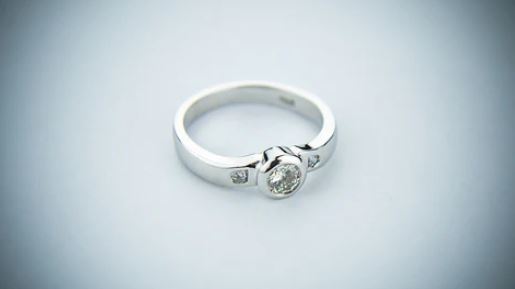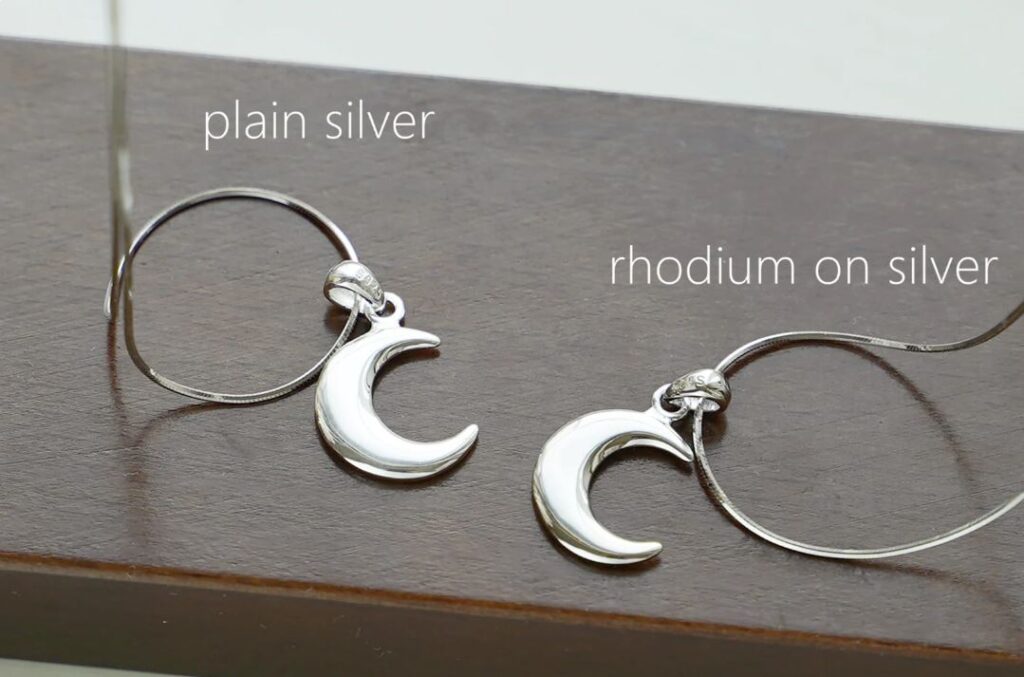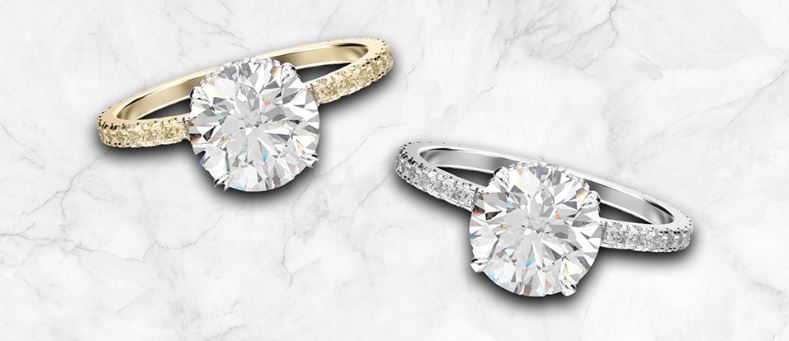Rhodium Plated vs Sterling Silver
Rhodium plated jewelry is a better option than simple sterling silver jewelry. It has a more shiny and lustrous look at an affordable price.
In this article you’ll get answer to questions like rhodium plated vs sterling silver, what is rhodium plated sterling silver and what to choose in between rhodium plated sterling silver vs sterling silver.
What is Sterling Silver
Sterling silver is a alloy made up of 92.5% pure silver and 7.5% with the other metals usually copper. This combination improve the strength of metal and durability while preserving the desirable properties of pure silver. like its bright luster and malleability.
What is Rhodium Plating
Rhodium plating means plating rhodium over a cheap base metal to enhance its looks. Rhodium is a pretty expensive metal. Good thing about it is its white lustrous look. It is the whitest and shiniest metal of all. That’s why it becomes a good choice to plate your jewelry with.
This plating is a very thin coating of about 1 micrometer.
Is Rhodium Plating Expensive
No, rhodium plating is not that much expensive. It can cost you about $60 to $100 for a ring. Cost depends on the quality and thickness you plate your jewelry with. This cost increases as the type and size of jewelry changes. For example, rhodium plating of a necklace will cost more than a pair of earrings.

Rhodium Plated Brass vs Sterling Silver
Sterling silver is a better option than rhodium plated brass as it does not tarnish faster.
Which is Better – Rhodium Plated or Sterling Silver
Rhodium plating over sterling silver is a good option than simple sterling silver as it can increase the bright appearance of jewelry. And also protect it from tarnishing.
Is Rhodium Plated Silver Good
Rhodium plated silver is a good option if you are looking for a low priced option in sterling silver. It must be note that after 3 to 4 months of regular use, rhodium plating will wear off. After that, you will have to re-plate it.
Rhodium Plated vs Sterling Silver – Full On Comparison
Here is a full comparison of rhodium plated vs sterling silver.
Appearance
Rhodium plating is a shiny white lustrous plating. It has a mirror-like finish that can enhance the brilliance of the jewelry. It is one of the whitest metal used in jewelry making.
Sterling silver is also a white shiny metal but not as good as rhodium plating.
Composition
Sterling silver is a silver alloy consisting of 92.5% pure silver and 7.5% other metals, typically copper. Copper is added to increase hardness and strength of the overall metal so it becomes suitable for jewelry.
Rhodium plating is rhodium plating over a cheap base metal. This base metal can be sterling silver, copper or any other.
Maintenance and Durability
Sterling silver can scratch indicating towards low durability. It can tarnish with time which can increase required maintenance. This tarnishing can be removed but adds to overall cost. If you use sterling silver jewelry regularly, you can expect to clean jewelry at least a month.
Rhodium plating can also get scratched. Its basically just a plating which will eventually wear off after 4 to 6 months. When it comes to tarnishing, rhodium plating does not tarnish. But once plating gets away, it will depend on the properties of base metal whether it tarnishes or not.
Wearability and Longevity
Sterling silver can last forever if you take care of it properly. This includes proper storage and cleaning. Sometimes it may require polishing to get rid of scratches.
Rhodium plating cant last for a long time. If you properly take care of it, it can last about 6 months. After that it will expose the base metal. Then it is up to you to either re-plate or leave it like that.

Daily Usage
Sterling silver can be used in daily usage. All you have to do is to do regular cleaning after 1 month and keep it away from rough hits like falling on rough surfaces etc.
Rhodium plating can also be worn for daily purpose. It has to saved more than sterling silver from scratches. Because if sterling silver scratches, a jeweler can repair it by buffing but rhodium plating has to be re-plated if it wears off.
Price
Sterling silver is generally more affordable than rhodium plated jewelry. On an average, a sterling silver ring can cost around $40 while a bangle can cost around $70. As you add silver weight or complexity of design, price will go up.
Rhodium plating can cost around $60 to $100 for a ring. As, size of the jewelry item increases, cost will go up. If rhodium plating wears off, it has to be re-plated and you will have to pay again.
What to Buy?
Sterling silver is ideal for those who appreciate traditional silver jewelry and are willing to invest time in its upkeep. Can be easily polished and repaired, and it is often used for custom designs and engravings.
Rhodium plated is great for individuals who prefer low-maintenance jewelry with a bright, durable finish. Apart, they can spend money on its re-plating.
Is Rhodium Plating Worth the Price
Yes, definitely if you are one who wants to have better looks on their jewelry. Its shine is definitely better than sterling silver’s.

What is Rhodium Plated Sterling Silver
Rhodium plated sterling silver is rhodium plated over sterling silver used as a base metal. This is a popular combination in silver plating jewelry. Some people use rhodium plating over sterling silver jewelry to get rid of tarnishing problem and enhance the white look of the metal.
Rhodium Plated Sterling Silver vs Sterling Silver
Rhodium plated sterling silver is a better option than sterling silver. One it has better looks and second it avoid tarnishing of silver until rhodium plating remains there. If you can spend extra $60 to $100 on top of sterling silver jewelry’s cost, then it is a good option.
Common FAQ’s about Rhodium Plated vs Sterling Silver
Here are some FAQ’s about rhodium plated vs sterling silver jewelry.
1. How much will rhodium plating cost?
Rhodium plating will cost around $60 to $100.
2. How often should I clean sterling silver jewelry?
Its good to clean it after 1 month.
3. Should I clean Rhodium Plated Jewelry?
Its better to just clean it without rubbing any toothbrush or anything. Because it can remove plating from it.
4. How Long will Rhodium Plating last?
It can last about 4 to 6 months.
Conclusion
Both sterling silver and rhodium plating can be good options. It all depends on the preferences of an individual buyer and their lifestyle. If you are one who don’t want to spend time on cleaning sterling silver jewelry and can pay extra cost for rhodium plating, then rhodium plating is better for you.
If you don’t want to pay extra cost and then cost of re-plating, then sterling silver is a good option.

